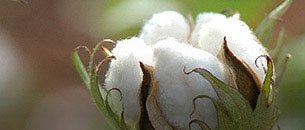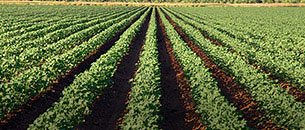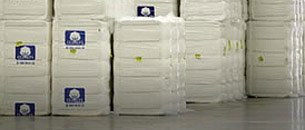
Providing research and technical services to cotton growers, ginners and their support industries.
Cotton Crop Market News
View and listen to current cotton market information, world events, and analysis from expert sources.
Spotlight on Growers
Cotton Incorporated showcases interviews with cotton growers to share their experiences and knowledge.
Decision Making Tools
Cotton farming decision aids provide bottom line answers to "what if" scenarios based on information entered.
Harvest Systems
Information about spindle-type cotton harvesters, stripper harvesting and seed cotton handling storage.
Irrigation Management
Detailed information on proper irrigation management for the cultivation of cotton in humid regions and other areas.
Websites & Resources
A variety of cotton production, crop management, yield variety, and fiber quality data resources.

Providing knowledge from outreach and research at leading Universities and other research facilities.
Agronomy
New varieties, crop nutrition, soil fertility, tillage, planting, seedling development and in-season management in cotton agronomy.
Agricultural Economics
Cotton Incorporated has a variety of tools available for cotton producers to gain information for their specific marketing plan.
Cotton Incorporated Fellows
The Cotton Incorporated Fellowship (CIF) program provides excellent doctoral and post-doctoral training opportunities for qualified applicants.
Cottonseed
The cottonseed research and marketing program strives to maximize cotton-grower profit from the cottonseed byproduct.
Entomology
Cotton is susceptible to a wide range of insect pests such as bollworms, plant bugs, stink bugs, aphids, thrips and spider mites.
Herbicide Stewardship
Herbicide resistance education and training are critical for advancing the adoption of diverse weed management programs to delay and mitigate the evolution of herbicide-resistant weeds.
Nematology
Plant-parasitic nematodes cost cotton growers more in chemical control expenses and plant losses than any other plant disease.
Plant Pathology
In addition to parasitic nematodes, cotton is subject to endemic bacterial, fungal, and viral diseases and at least two recently introduced fungal diseases.
Weed Management
Following planting, cotton requires 8 weeks of weed-free growth for maximum yields. Good yields require over 95% weed control.
Engineering
Precision crop management, conservation tillage systems, irrigation management, harvest equipment, and ginning.
Variety Improvement
Cutting edge research from several disciplines provides a solid foundation for the continued genetic improvement of cotton.

Using HVI data combined with advanced software allows users to improve spinning processes and end product quality.
Classification of Cotton
There are three groups of commercial cotton; American Upland cotton, American Pima or Extra Long Staple (ELS) cotton, and shorter length cottons.
U.S. Cotton Fiber Chart
American Upland cotton crop data for the Far West, Southwest, Midsouth and Southeast cotton growing areas.
Cotton Crop Quality
Every bale of cotton in the United States is classed by USDA classing offices and reports are issued weekly during the classing season.
Cotton Standards Websites
Organizations in which Cotton Incorporated participates to enforce the standardization of cotton as a natural resource.
ENGINEERED FIBER SELECTION® Software
Use Cotton Incorporated's Engineered Fiber Selection® (EFS®) Cotton Management System™ Software to consistently create the best quality yarn.














